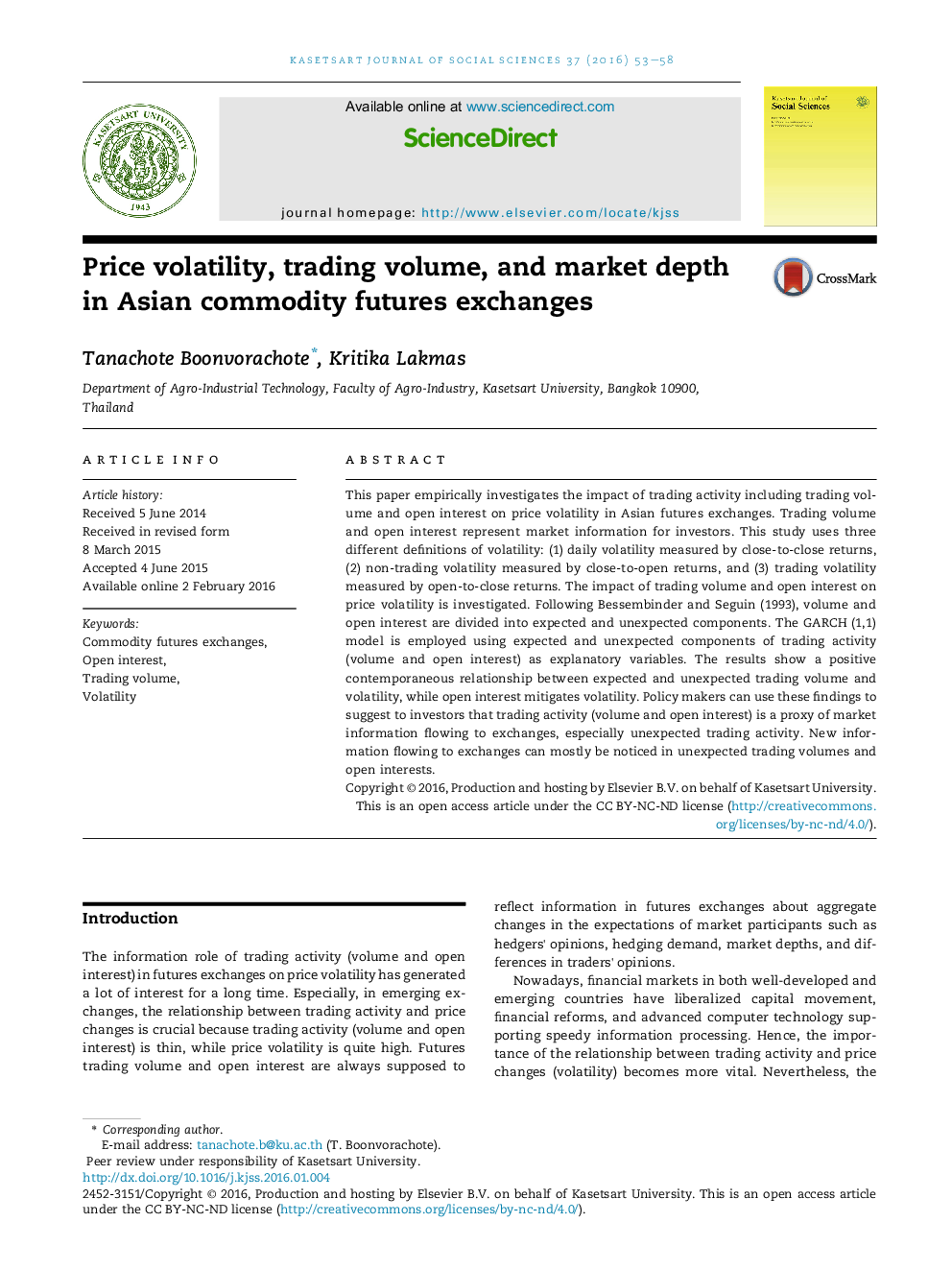| Article ID | Journal | Published Year | Pages | File Type |
|---|---|---|---|---|
| 364330 | Kasetsart Journal of Social Sciences | 2016 | 6 Pages |
This paper empirically investigates the impact of trading activity including trading volume and open interest on price volatility in Asian futures exchanges. Trading volume and open interest represent market information for investors. This study uses three different definitions of volatility: (1) daily volatility measured by close-to-close returns, (2) non-trading volatility measured by close-to-open returns, and (3) trading volatility measured by open-to-close returns. The impact of trading volume and open interest on price volatility is investigated. Following Bessembinder and Seguin (1993), volume and open interest are divided into expected and unexpected components. The GARCH (1,1) model is employed using expected and unexpected components of trading activity (volume and open interest) as explanatory variables. The results show a positive contemporaneous relationship between expected and unexpected trading volume and volatility, while open interest mitigates volatility. Policy makers can use these findings to suggest to investors that trading activity (volume and open interest) is a proxy of market information flowing to exchanges, especially unexpected trading activity. New information flowing to exchanges can mostly be noticed in unexpected trading volumes and open interests.
